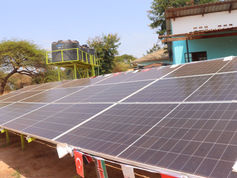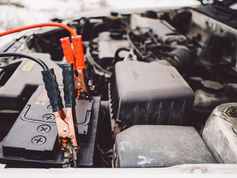Illuminating Pathways: The Power of Energy Access, Efficiency, and Strategic Development
- Patrick Masendi

- Mar 18
- 3 min read
In today's interconnected world, energy access and efficiency stand as central pillars for both socio-economic development and environmental sustainability. From remote villages to lively urban centers, the availability and efficient utilization of energy resources shape the trajectory of communities and nations. As we delve into the significance of these core interests, we eventually discover their link to the key strategic areas driving progress on a global scale. Energy access is more than just a convenience; it's a fundamental human right and a catalyst for positive progress. Yet, according to the International Energy Agency (IEA) 2022 report, 789 million people globally lacked access to electricity, while a significant portion of people with limited access to electricity, especially in South Asia and Sub-Saharan Africa, still find it unreliable. This energy poverty not only impedes socio-economic growth but also aggravates inequalities. However, addressing this challenge presents an opportunity for strategic development that extends far beyond mere electrification.
Imagine a rural village in Uganda illuminated for the first time, not just by the flicker of light bulbs but by the promise of education, healthcare, and economic empowerment. By leveraging renewable energy sources such as solar, bioenergy, and wind, we not only bridge the gap in energy access but also lay the groundwork for sustainable development. These communities become resilient hubs, less vulnerable to the fluctuations of centralized power systems and more capable of projecting their course towards progress.

Additionally, energy efficiency emerges as critical in the pursuit of sustainable development. It's not merely about producing more energy but about optimizing its usage. From designing and implementing energy efficiency in the built environment to implementing smart grids, efficiency measures offer a two-fold benefit of reducing carbon emissions and enhancing energy access. By raising the productivity from every unit of energy consumed, we mitigate the environmental impact and make energy more affordable and accessible to all. The intersection of energy access and efficiency extends its reach into key strategic areas, influential policies, and initiatives for a brighter future. One such area is climate action. The transition towards cleaner, more efficient energy systems is necessary in combating climate change. By prioritizing renewable energy sources and integrating energy-efficient technologies, we mitigate carbon emissions and advance resilience against the impacts of a changing climate.
Furthermore, energy access and efficiency are fundamental in achieving broader sustainable development goals, including poverty alleviation, health improvement, and gender equality. Access to clean and reliable energy enhances livelihoods, facilitates access to clean water and sanitation, and empowers women and marginalized communities by reducing their drudgery in fetching fuel and water. In the interactions between geography, politics, and international relations, energy access and efficiency are catalysts for stability and cooperation. By diversifying energy sources and fostering energy independence, nations reduce their vulnerability to geopolitical tensions and conflicts over finite resources. Moreover, international collaborations on energy access projects promote diplomacy and foster mutually beneficial partnerships.

The connection of energy access and efficiency links with the key strategic areas, offering a conceptual guide that outlines the steps, goals, and milestones required to achieve sustainable development and global prosperity. By prioritizing these fundamental interests, not only will we be brightening ways out of energy poverty, but we will also be paving the way for a more robust, fair, and balanced future for all. As we navigate the intricacies of our interconnected world, let us think of harnessing the power of energy access and efficiency to light the way toward a brighter tomorrow. Everyone can contribute differently, whether through investing, consuming, designing solutions, or implementing.













Comments